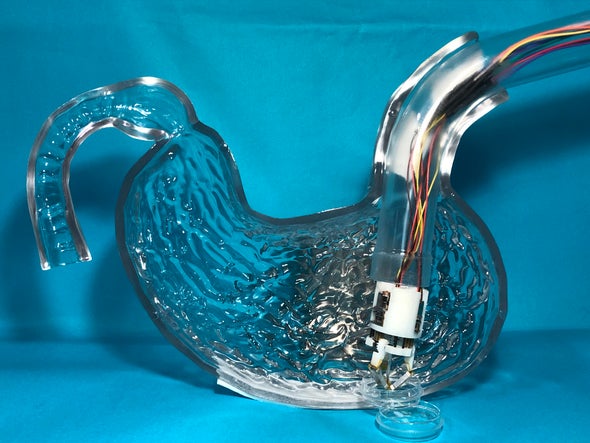
Stomach ulcers and other gastric wounds afflict one in eight people worldwide, but common conventional therapies have drawbacks. Now scientists aim to treat such problems by exploring a new frontier in 3-D printing: depositing living cells directly inside the human body.
Just as 3-D printers set down layers of material to create structures, bioprinters extrude living cells to produce tissues and organs. A long-term dream for this concept is that people on active waiting lists for organ donations—nearly 70,000 individuals in the U.S. alone, according to the nonprofit United Network for Organ Sharing—might one day have the option of getting a bioprinted organ. Although the ability to produce a functional heart or kidney this way likely lies years in the future, realistic near-term goals include bioprinting simpler structures, such as bone grafts. Living tissues printed outside the body, however, would still require implantation surgery, which often involves large incisions that increase the risk of infection and lengthen recovery times.




Comments
Post a Comment